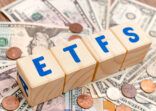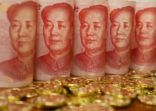Partnering with US-based Direcxion, ChinaAMC Direxion Nasdaq 100 Daily (2x) Leveraged Product and ChinaAMC Direxion Nasdaq 100 Daily (-1x) aim to amplify the returns of the US tech-heavy index.
Hong Kong’s regulator does not allow leveraged and inverse products tracking mainland and Hong Kong equities or other asset classes, but overseas equities are permitted.
“We think the US stock market is the best known and most familiar to investors,” Vincent Chen, head of the ETF business, told FSA.
The time zone difference between Hong Kong, where the ETFs are listed, and the underlying portfolio in the US, is not a disadvantage, Chen said.
“As most private bank clients have a US portfolio, they might want to execute trades when something big happens in Asia when the US market is closed, say a black swan event.”
The underlying holdings, the E-mini Nasdaq 100 futures traded on the Chicago Mercantile Exchange, have active transactions and sufficient liquidity round the clock, he added.
Investors from nearby countries, such as China, Taiwan and Korea, might also show interest, he added, as this is Asia’s first leveraged and inverse product tracking Nasdaq.
CSOP Asset Management and Samsung Asset Management introduced similar products in the past three months, tracking benchmark indices of India, Korea and Japan.
In Taiwan, Yuanta Securities Investment Trust listed a pair of leveraged and inverse ETFs tracking the S&P 500 index in December last year.
L&I on Connect?
Direxion acts as the product adviser. It also has two of its own structured ETFs, listed in the US and tracking China’s CSI 300 index.
Chen said China AMC will work with Direxion for the foreseeable future, hopefully to launch more such products after the regulator further relaxes the rules. Hong Kong’s Securities and Futures Commission earlier said it will review the restriction in the coming months.
Estimated ongoing charges of the ChinaAMC ETFs are 1.65% a year. To compare, Direxion’s US-liated Nasdaq 100 Bull 2x mutual fund has a gross expense ratio of 1.39% as of August.
It is still uncertain whether L&I ETFs will be included in the ETF Connect, Morningstar said earlier. Nonetheless, industry players are introducing ETFs in Hong Kong with the aim of addresssing mainland investor demand for overseas diversification.
Whether the L&I ETFs will catch on is difficult to say. ETFs in general have had trouble gathering assets in Hong Kong and L&I adds an additional layer of complexity to the passive products that will require some market education to generate wide interest.
















